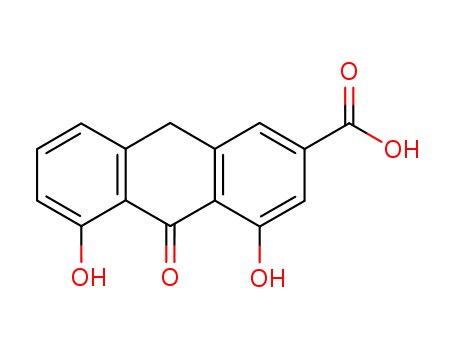Technology Process of Rheinanthrone
There total 5 articles about Rheinanthrone which
guide to synthetic route it.
The literature collected by LookChem mainly comes from the sharing of users and the free literature resources found by Internet computing technology. We keep the original model of the professional version of literature to make it easier and faster for users to retrieve and use. At the same time, we analyze and calculate the most feasible synthesis route with the highest yield for your reference as below:
synthetic route:
- Guidance literature:
-
With
hydrogenchloride; tin(ll) chloride;
In
acetic acid;
at 140 ℃;
for 2h;
DOI:10.1248/bpb.28.1897
- Guidance literature:
-
Multi-step reaction with 2 steps
1: rat feces suspension / H2O / 1 h / 37 °C / anaerobic incubation in pH 7.3 phosphate buffer; effect of Ca(2+), Mg(2+), pH (4 to 11), temperature (up to 80 deg C), cysteine concn. (0 to 100 mM) investigated
2: H2O / 8 h / 37 °C / anaerobic incubation with rat feces, pH 7.3 phosphate buffer
With
rat feces suspension;
In
water;
DOI:10.1248/cpb.30.1338
- Guidance literature:
-
In
water;
at 37 ℃;
for 8h;
Yield given;
anaerobic incubation with rat feces, pH 7.3 phosphate buffer;
DOI:10.1248/cpb.30.1338




